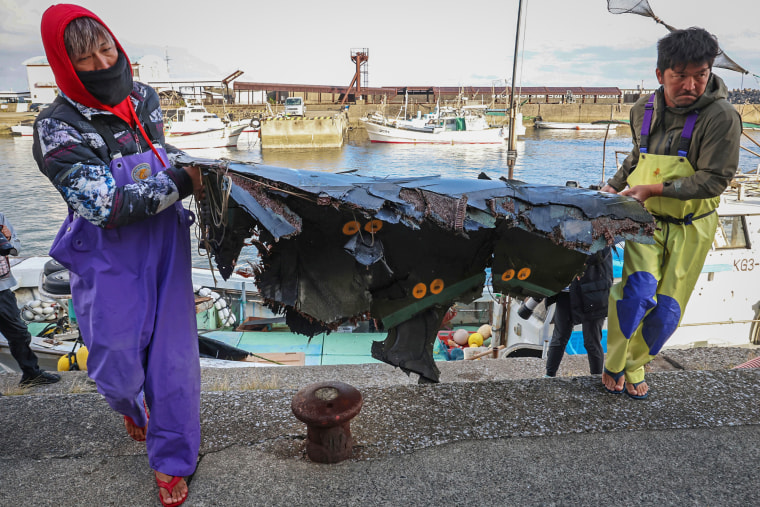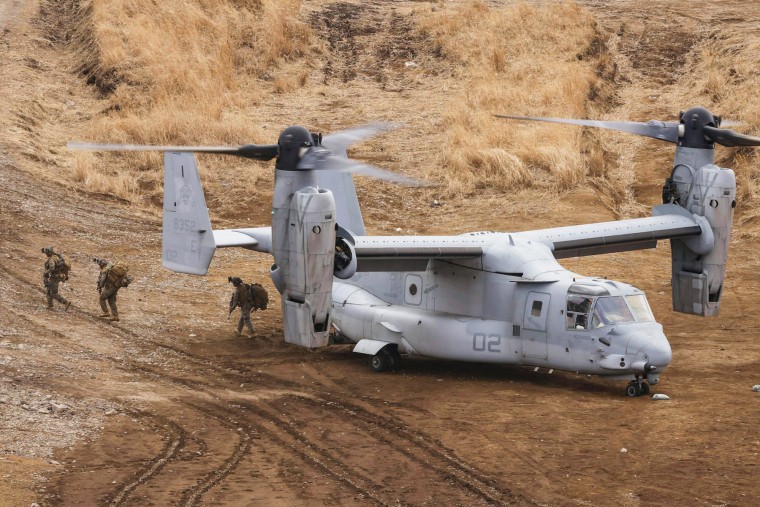Secretary of Defense Lloyd Austin could be briefed as early as this week on the military’s plans to get its troubled V-22 Osprey aircraft back in the air, according to a senior defense official familiar with the program and a senior defense official.
Austin requested to be updated on the Air Force and Navy proposals before the military begins flying the unique twin-rotor aircraft again, the officials said. The officials would not speculate on why Austin requested to be part of the process, which is not always required.
From March 2022 to November 2023, 20 service members died in four fatal Osprey crashes. On Dec. 6, 2023, one week after an Air Force CV-22 crash off the coast of Japan killed eight U.S. special operations airmen, Naval Air Systems Command grounded all of the U.S. military’s approximately 400 Ospreys.
Before the grounding, the Marine Corps used its nearly 350 MV-22 Ospreys for roughly three-quarters of all movements of personnel and equipment during operations, according to a senior defense official familiar with the program.
Last week, NBC News reported exclusively that investigators are looking at a problem involving the aircraft’s propeller rotor gear box as the possible cause of the crash.
While officials are still investigating exactly what caused the problem in the gear box, U.S. military officials have identified ways for pilots to manage the issue.
Now Austin is expected to be briefed by senior civilian leaders of the Navy and the Air Force on their plans, including enhanced safety checks for the aircraft and the gear box, as well as more conservative in-flight procedures to mitigate what is believed to have been the cause of the deadly CV-22 crash in November.

The Osprey’s twin rotors allow it to take off and land vertically like a helicopter, but they can also be repositioned to let the Osprey fly like a propeller plane. The rotor gear boxes are two large structures near the top of the aircraft that operate like a car’s transmission. Sometimes metal chips will break loose in the box, threatening the aircraft’s ability to keep flying. Some metal chips are harmless but, if they impact the Osprey’s operation, the pilot receives an electronic warning. In the past, pilots were expected to land as soon as possible after the first warning, and immediately if there is a second electronic warning.
The military will direct that pilots take a new, more cautious approach that includes landing even faster when they receive warnings about metal in the gear box, said the defense officials.
If Austin agrees with putting the Ospreys back in the air, the next move will be for military leaders to notify Japanese authorities that the grounding bulletin will be lifted and update them on technical details, the defense officials said. U.S military officials have regularly briefed Japanese officials since the November crash, according to a senior defense official familiar with the program.
The Pentagon declined to comment.
The Marine Corps, Navy and Air Force fly the Ospreys, and each service will set their own timelines and priorities for which units will be back in the air first. Once the grounding is lifted, it will take on average about one month to get ready for basic flying again, according to a defense official familiar with the program. The new restrictions could restrict some of the more advanced or higher-end training, the senior defense official said.
But officials in the Osprey community warn that the risk of not flying is mounting every day, as pilots lose precious time to train and prepare for deployments.
The Marine Corps has 17 Osprey squadrons. A squadron in Djibouti returned to flight in mid-January, according to two senior defense officials. The squadron is already following the new protocols and has not had any safety incidents since then, according to a senior defense official familiar with the program.

